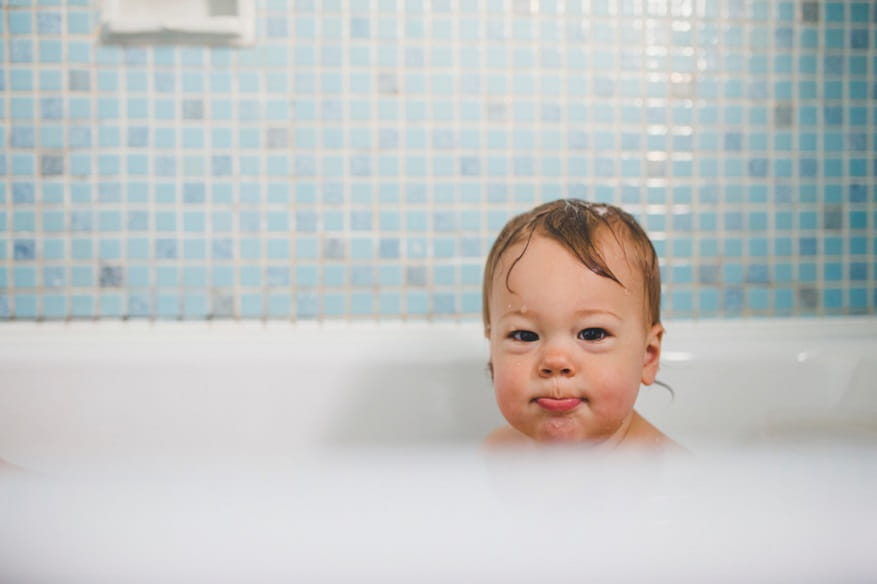Ablutophobia: The Naked Truth About Bath Time Fears

Your little water baby absolutely loves the bath, every day gladly bounding into the tub and splashing and playing with glee. And then one day, seemingly out of nowhere, they refuse to go anywhere near the tub: “No bath! No, no, no, no, no!”
A fear of bathing (called ablutophobia) and water, it turns out, is a very common toddler phobia, and usually shows up around ages 1-2. There’s a reason for that: During these years of rapid brain growth, toddlers develop what seems like a hyperawareness of their surroundings. Their brains are literally lighting up with new information.
As a result, things like toilet flushes, thunder, doctors’ medical equipment, and drains that suck all the water away can be overwhelming to your child and sound and appear, well, terrifying.
That’s why it’s important to treat the fear of bathing with empathy and care, even though this can be a challenging behavior to work through. Bath-time fears can last weeks or even months, leaving many parents wondering if they’re raising a lifelong landlubber.
Fear not: This too shall pass. Your child is not experiencing a major anxiety disorder. You’ll splash together again! Here’s how to manage this period of time with positivity (and keep your kid clean, too).
1. Try to Uncover the “Why” Behind Your Toddler’s Phobia
Identifying the source of the fear can help you find ways to address the issue. For example, if your child reacts fearfully when you’re filling the tub, the sound of rushing water may be the culprit. If they have a phobia of being pulled down the drain, try unplugging the drain and have them observe how their rubber ducky stays in the bath even when the water disappears—or simply wait to drain the bath until after they’ve gone to sleep.
2. The Washcloth Is Your Friend
While you may not understand it, the fear your child is feeling is real, which is why you don’t want to force them to get in the tub. We promise: This fear will eventually pass, and your child will want to bathe again. Until then, you can use washcloths, warm water, and a little mild soap to get their face, hands, and diaper area clean.
3. Don’t Worry About Bathing Every Day
When it comes to babies, “…bathing a couple of times a week is often enough,” according to the American Academy of Pediatrics. You’re off the hook as your children age as well: The American Academy of Dermatology suggests that children ages 6 to 11 only need a bath once or twice a week unless they’re especially dirty, sweaty, or have a skin condition that requires more bathing.
4. Try a Smaller Bath
Instead of the tub, you might go back to using a smaller plastic container of warm water (with bubbles), and encourage them to put a few toys and their feet in it. Give them praise and show excitement for any steps they do take, even if they only dip their toes in!
5. Get in the Tub Yourself
We love this idea from Dr. William Sears, who suggests you show your child how fun bath time really is by taking a bath yourself! Leap in, play with their toys, blow bubbles, and have a rollicking good time. If your child wants to join you, make them feel secure by holding them on your lap. Sears also recommends limiting the actual washing “until you’ve gotten them used to thinking of bath time as fun again.”
6. Bubble Bath, Toys, and Other Enticements
This may sound obvious, but try using new toys or the staple of bath time—bubble bath—to entice them back into the tub, or try these fun and easy science activities. The goal is to help them realize there’s nothing to be afraid of by making bath time a real treat!





